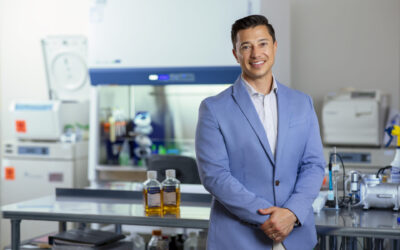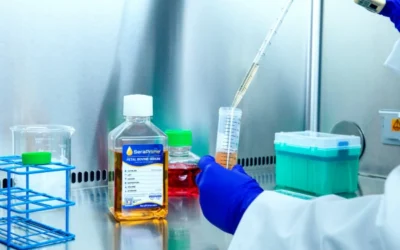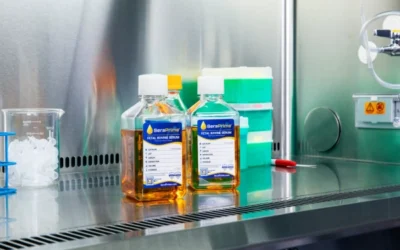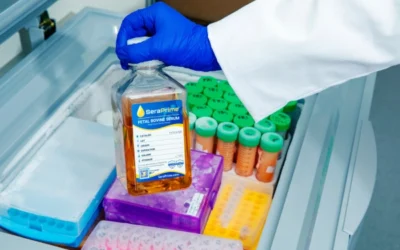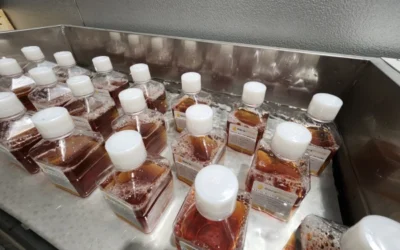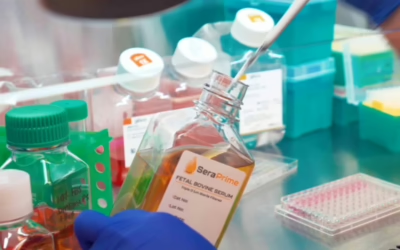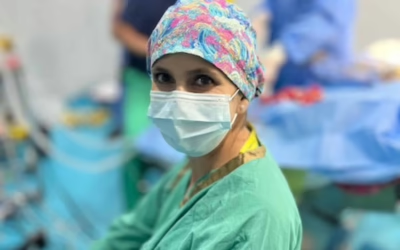Resources
Explore our latest insights, commonly asked questions, and product education to support your research.
News & Insights
FAQs
Product Specs
News & Insights
Stay informed with industry insights, product updates, and practical tips for getting the most out of your serum. Whether you’re troubleshooting cell culture or exploring new applications, our blog is here to support your work at every stage.
Want research-backed insights delivered to your inbox?
Published in GEN: Seraprime’s Take on the FBS Shortage
The global fetal bovine serum (FBS) supply chain is under unprecedented pressure. Environmental...
The Downsides of hPl as a FBS Alternative
Fetal Bovine Serum (FBS) has long been the cornerstone of cell culture research, praised for its...
The Past, Present, and Future of Fetal Bovine Serum
Fetal bovine serum (FBS) has been a cornerstone of scientific research for decades, quietly...
Which Fetal Bovine Serum is Best for Your Research?
Choosing the right Fetal Bovine Serum (FBS) is crucial for the success of your research as the...
Advantages of Fetal Bovine Serum in Clinical Research
In the world of clinical research, one crucial component often determines the success of cell...
Heat Inactivation
Heat-inactivated (HI) Fetal Bovine Serum (FBS) is one of the highest-quality serum products...
Fetal Bovine Serum – Most Common Questions Answered
At SeraPrime, we receive many questions about our fetal bovine serum, including aspects of use,...
Supporting Smiles: SeraPrime’s Care for Communities in Need
At SeraPrime, we understand the power of fetal bovine serum (FBS) to create a widespread positive...
FAQs
This is a list of commonly asked questions and technical information about Fetal Bovine Serum (FBS) and various Sera. If you have further questions, please contact us. We are happy to assist and discuss this further.
Why is Traceability Important?
Traceability is important because it provides a chain of identity of the product from the country and slaughterhouse of origin to the processing, packaging, and labeling facilities, ready for sale and final distribution. As you can verify, traceability ensures that the product you purchase was made respecting regulations at each level. This unbroken chain of information means complete transparency and entire compliance for all levels of research and settings.
How Does SeraPrime Guarantee Traceability?
SeraPrime works directly with manufacturers who have implemented supply chain controls from harvesting the raw material to filling sterile bottles.
These rigorous traceability controls guarantee complete product traceability, from raw material to the finished product. This enables SeraPrime to determine batch lineage and global traceability.
How Relevant is the Country-of-Origin?
How is the Origin of Serum Determined?
Are Some Origins Better Quality Than Others?
Why Does Price Differ From Countries/Origins?
What Does USDA Approved Mean?
How Long Can The Serum be Stored Between +2 to +8℃?
(*) Art to Science, Vol.19, No.2, “Serum Stability at Refrigerated Temperatures (2-8°C).
What is the Recommended Storage Temperature for the Serum?
What is the Best Way to Thaw Serum?
Temperatures above 37°C can compromise serum performance by accelerating the degradation of critical serum factors and should be avoided in the lab.
What Are The Precipitates in the Serum?
Turbidity and flocculent material may be present after thawing or after prolonged freezing and/or refrigeration. Our experience indicates these modifications do not affect the biological performance of the serum.
- Some of the precipitates are due to fibrin:
Our collection procedures and rapid freezing may leave some fibrinogen in the serum. Fibrinogen is the soluble precursor of the clot-forming protein, fibrin. The fibrin may appear after thawing or heat inactivation. Fibrin does not alter the capacity of the serum to promote cell growth. It is recommended to use the serum without treatment (filtration or centrifugation). - Some of the precipitates are due to Calcium Phosphate:
Serum that is incubated at 37°C for extended periods will become cloudy, and deposits may appear. They are composed of calcium and phosphorus. To the best of our knowledge, this does not alter the performance of the serum in cell cultures.
Is it Necessary to Heat Inactivate Serum?
What About Bovine Viruses?
These are viruses of concern when importing FBS from infected countries. Other cattle viruses exist in all countries, and regardless of country of origin, the FBS must be tested or treated to assure freedom from these and other viruses (See USDA 9 CFR 113.53 and EMEA-CPMP-BWP-1793-02). The treatment of choice for most FBS is gamma irradiation at 25-45 kGy to guarantee freedom from viruses.
What is Endotoxin?
Endotoxin is lipopolysaccharide found in gram negative bacteria’s outer cell membrane. Endotoxin is measured in “Endotoxin Units” per mL (EU/mL).
Suggested industry standard is < 10 EU/mL, some manufacturers will advertise that the lowest levels are “better” for cell growth and justify a higher serum cost. If your application does not have endotoxin requirements, then the use of a “Standard Grade” with slightly elevated levels will offer savings and the same quality/performance.
What is Hemoglobin?
Hemoglobin is from lyses of red blood cells during the transportation and processing of raw blood into serum. No reported effects are related to hemoglobin concentrations of < 100 mg/dL. Typical levels of hemoglobin in serum range from 10-30 mg/dL.
Are SeraPrime Products Sterile?
Foot and Mouth Disease (FMD): Does it Matter?
What is BSE?
What is the Risk of BSE in Serum Products?
For some time, BSE was an argument used in favor of certain origins. After the OIE has determined that BSE is not transmitted by blood products, these arguments have become obsolete.
What Are the Sampling Rules for Sterility Tests on Sera?
How Are the Samples Tested for Viruses?
Why is FBS Sometimes Gamma Irradiated?
Does Gamma Irradiation Affect FBS Performance?
SeraPrime suggests you test your cell lines with gamma irradiated serum to define the potential impact of the treatment on your applications.
Product Specs & Certificates
Access detailed specifications, Certificates of Analysis (CoAs), and documentation for SeraPrime’s full range of serum products.

